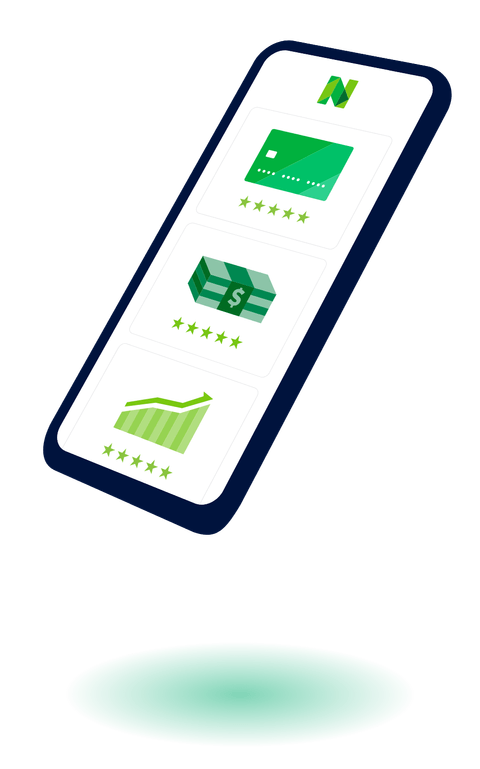How to Start a Winery: 5 Steps to Starting a Wine Business
Growing a successful winery takes time, but these expert tips can help put you on the right track.

Many, or all, of the products featured on this page are from our advertising partners who compensate us when you take certain actions on our website or click to take an action on their website. However, this does not influence our evaluations. Our opinions are our own. Here is a list of our partners and here's how we make money.
To take on the challenge of how to start a winery, you need to be determined, fearless and passionate about your craft — although owning a vineyard seems romantic, starting a business in any industry is work, and the wine business is a tough one.
Just take a look at the success story behind Russell Bevan of Bevan Cellars. Bevan bought his first 10 acres in Napa Valley’s Sonoma County in 2004, but it wasn’t until 2013 that he got his first 100-point Robert Parker score for his 2011 Cabernet Sauvignon. Shortly thereafter, his mailing list jumped from 500 subscribers to 3,000 in two days — and he saw a positive turnaround in the business’s bank account for the first time since he started his wine business.
Between 2004 and 2013, the vintner lifestyle didn’t always taste so good. There was a time when Bevan’s family stopped returning his phone calls, because they knew there was a chance he was calling to borrow more money. “I cashed in my 401(k) and I had a quarter of a million dollars in credit card debt at one point,” he says.
Those undeterred by the challenges of owning a vineyard need more than determination alone to get their ventures up and running — they’ll need some numbers, too.
Smart money moves for your business
Grow your small business with tailored insights, recommendations, and expert content.

How to start a winery: 5 steps to success
Starting your winery is going to take you quite a bit of time, but if you follow these steps you'll be off to a good start.
1. Come up with a name and choose a business entity
Before you get in too deep with creating your wine business or winery, you need a name and a business entity in mind. You should make sure that the name you want for your winery is available and that some other winery out there hasn't already snagged it. This will be hugely important when it comes to actually selling your wine too because a name can go a long way with branding to make your wine stand out and be memorable.
You can check to make sure that the business name you want is available and you can probably reserve it online. Simply check with the secretary of state's office in your state. Keep in mind you also want the domain name for the name you choose to be available so you can create a website and other online marketing tools, like an Instagram account.
You'll also need to choose a business entity for your new wine business. There are plenty of entities to choose from, but you might want to go with a limited liability company, as it offers you certain protections an individual might not receive, while allowing for you to be taxed either as a sole proprietor or corporation.
2. Write a business plan
When writing your business plan you should include extensive research about the industry and competition. Be sure to include a summary of the business to start, and then a company overview, market analysis, specifics on the product you plan to offer, financial projections and more.
You can either use a business plan template or come up with your own. Either way, it should be comprehensive and include quite a bit of research. It's also not a static document — it should be updated as your company grows and your goals change. Try and think of it from a potential investor's perspective: What information would you want to be included if you were looking into investing in a company?
The winemaking industry is heavily regulated, so licensing and permits can get complicated — so complicated, in fact, that there are wine-compliance companies that do nothing else but help winemakers navigate local and federal wine regulations.
You’ll need to first apply for and acquire a permit to legally operate your winery, but the regulations don’t stop there. You’ll also need to register your business with the FDA, comply with local and state laws and even have your wine labels approved by the Alcohol and Tobacco Tax and Trade Bureau.
And if you’re selling across state borders, it gets even stickier, as some states have their own laws about direct shipment. Once you’ve crossed the licensing and permit logistics off your list, you’ll need to stay on top of your state’s excise and sales taxes on wine, too.
If you're uncomfortable with keeping all of this in order, we suggest you consult a lawyer with experience and expertise in the winery field.
AD
Boost Your Credit for a Strong Future
Better credit¹ can open up new financial opportunities for your business.
Start building faster¹
On average, users with starting credit under 600 saw +84² points in 1 year with on-time payments.

The power of tri-bureau reporting
Kikoff reports to Equifax, Experian, & TransUnion monthly.
Fast and easy
No credit check. No interest. No hidden fees.
4. Create a budget
Once you have your business plan and you know what licenses and permits you need — and how much they'll likely cost — you can create your business budget with all of those costs in mind. Being “all in” often comes with a hefty price tag. William Foley, the founder of Foley Wine Group, says it didn’t take long before he ended up spending $15 million after purchasing 460-acres in California’s Santa Barbara County nearly 20 years ago.
Since then, the vineyard prices have only gone up, especially in regions like Napa Valley where land is scarce. Vineyards in Northern California can cost $11,000 to $30,000 per acre, but in the next 30 years, the price tag is predicted to reach $1 million per acre.
Of course, you don’t need to be in California to start a winery. In fact, there are wineries in all 50 states — and land prices are certainly lower beyond the Golden State. If you have the space and the land quality for it, you can even start a (very small) winery in your own backyard, which cuts real estate costs entirely. In that case, installing your vineyard can cost between $35,000 and $45,000 per acre.
After purchasing or developing your plot of land, you also have to think about the annual establishment costs needed to keep those vines alive, which adds around $15,000 to $20,000 per acre in the first three years.
Again, keep in mind that you still don’t have any grapes yet at this point to make your wine. Next, vineyard owners have to invest in machinery and equipment, which doesn’t come cheap. Lastly, most vineyard owners want to build a production facility and tasting room, since 90% of revenue will come through your tasting room.
With all these costs, we recommend opening a business checking account to keep your business finances separate from your personal finances.
Wine business startup costs to consider
In your first year alone, you’ll need to invest some serious capital into your wine business. In this industry, in particular, investing in expensive fixed assets — think land, machinery and equipment—is non-negotiable.
While your expenses will be ongoing, the vast majority of your investment will go toward establishing your vineyard’s infrastructure and operations during your first two years of business. Jerry White of Cornell University lists the following as expenses to consider within your first two years of starting a wine business alone:
- Land.
- Equipment, including refrigeration, cellar equipment, winery buildings, trucks and receiving equipment.
- Vines.
- Fermentation and storage.
- Cooperage.
- Bottling line.
- Office.
- Tasting room.
Other startup costs to consider include payroll for your staff, shipping, marketing and business insurance. In all, White estimates that your first five years require a capital investment of over $1.5 million.
5. Get funding for your wine business
Most aspiring vintners, especially those just learning how to start a winery, can’t cough up $1.5 million all on their own, so they’ll need to turn to some form of outside financing.
Like any startup, the newest vineyards may have trouble securing debt-based small-business loans, so initial funding will likely come largely through a combination of equity financing, friends and family loans and bootstrapping.
Also know that, regardless of which type of loan you apply for, you'll have the best chances of approval with a high personal credit score, profitability, time in business and strong cash flow, so the best time to apply for a loan will most likely be after your busy season.
Bank loan
Securing a bank loan might be tough for vineyards since the wine business is inherently risky (as is any industry subject to the potentially destructive whims of nature). And if they do approve of a vintner’s loan application, banks might require a large down payment — potentially up to 50% of the loan amount — to protect their interests.
If you’re determined to secure a loan from a bank, you might have the best luck at your community bank or credit union, rather than a large, national branch. Even still, be prepared to provide a hefty down payment, and pay a higher interest rate than usual. You can also expect an appraisal of your vineyard.
And because of the industry risk, potential lenders will be militant about ensuring the borrower herself is financially secure enough to repay her loan, even if her wine business fails. So, alongside the business’s financials and projected income, lenders will closely evaluate the borrower’s personal salary and credit score.
According to the Wall Street Journal, due to the increasing popularity of individually owned wineries, some banks have actually established loan programs geared specifically toward vineyards.
Live Oak Bank, for instance, offers financing solutions for wineries and other alcohol manufacturers; funds from these loans can be used toward purchasing equipment, construction, expansion, working capital and more. Exchange Bank also disburses vineyard, winery and agricultural loans; its financing products include business lines of credit for purchasing inventory, equipment loans, real estate loans, and leasing.
Equipment loan
Your major upfront costs are equipment, so looking into an equipment loan is kind of a no-brainer for winemakers. If approved, your lender will front you up to 100% of the cost of your equipment, which you’ll repay, plus interest, over time.
Startups might have an easier time qualifying for equipment loans than other types of loans, too. Because the equipment itself acts as collateral, lenders care equally about the value of the equipment as they do your business’s financial track record.
Business line of credit
Like any other agricultural business, vineyards can expect to experience seasonal peaks and troughs. A business line of credit is ideal for buoying you through those dips, because you can tap into it whenever you need, and you only need to pay interest on the funds you use.
And if like most vineyards, you don’t grow all your own grapes, you can pull down from your line of credit to buy grape inventory to blend or add to what you do harvest.
Business credit card
Like any other small business owner, winemakers pay for a ton of their smaller expenses on business credit cards, and tend to carry a large balance when they’re first starting out. To mitigate your initial interest charges, choose a credit card with a long 0% intro APR period, which lets you carry a balance interest-free for the duration of that introductory period.
Alternative models to start a wine business
If you’re not keen on investing so much capital into a full-blown winery, you can still assume a hands-on role in the wine business. Just consider an alternative business model, instead.
One option is to become a “virtual winemaker,” like Cannonball Wine Company, which started in 2006 in Healdsburg, California. Rather than shelling out millions for a vineyard and processing facility, Cannonball co-founder Yoav Gilat decided to build a brand with much less.
For many years, Gilat worked in hospitality before joining the Israeli army. He then moved to the U.K. for law school, and eventually moved to the Bay Area with his wife to earn his MBA from Berkeley.
In California, he met his Cannonball co-founder, Dennis Hill, who has been in the winemaking business for 35 years and was a top winemaker at Blackstone Winery. His other co-founder, Greg Ahn, is also a veteran winemaker in Sonoma County. Their goal, according to Gilat, “was to create a really great wine under $20,” while having some fun in the process.
The three began Cannonball as a “virtual” company — they don’t own a winery, or a vineyard. They don’t even have a tasting room (although the company can set one up if you ask). Rather, Cannonball has existing family growers harvest their grapes, and then Cannonball’s winemakers make the wine in rented equipment.
“We have our own tanks and barrels, but we use a facility where we pay them per case for the wine that we make,” says Gilat. “We also pay them for storage. And if we crush the grapes and ferment them, then we pay for the equipment.”
Now, the company has four brands under its belt — Cannonball, Angels and Cowboys, High Dive and Astrolabe — and Cannonball alone is sold in 47 U.S. and 30 international markets.
Of course, even starting a virtual wine business requires financing; Gilat and his co-founders financed their venture with friends and family loans, as well as an SBA loan. But if you opt for an alternative business model, you likely won’t need to invest the millions that you would if you’d started your winery from scratch.
Tips for the future
Regardless of your wine business model, know that your business’s success ultimately depends upon catering to your customer — and keeping up with their changing tastes, spending habits and the industry at large. This is one of the keys to how to start a winery that's successful.
In particular, industry predictions presented in Silicon Valley Bank’s “State of the Wine Industry 2018” report provides some valuable information for both newbie and expert vineyard owners.
First off, wineries will need to adapt their marketing and sales strategies to appeal to a shifting demographic. According to the report, the majority of today’s wine consumers are cost-conscious, prioritize experience and value (which, in this instance, can be defined as quality divided by price) over luxury for luxury’s sake, and frequently shop online.
Going forward, all vineyards — especially those that rely largely on tasting rooms to generate revenue — should seriously consider setting up an easily navigable online store and, when possible, pricing their wines in the $12-$25 range sweet spot, which is growing in demand.
Aspiring vintners should be aware of increasing prices in arable land — another reason to consider going the alternative-business-model route. And all domestic winemakers should shore up against the encroaching competition from good-value foreign imports, which are hitting record highs.
In continuation of a decade-long trend, small vineyards are finding it difficult to sell to restaurants. That may make the suggestion to set up an online store, and to improve the onsite tasting experience, even more urgent; this also provides an opportunity for vineyards to get creative in their marketing, and to hone their sales in on local restaurants.
Article sources
NerdWallet writers are subject matter authorities who use primary,
trustworthy sources to inform their work, including peer-reviewed
studies, government websites, academic research and interviews with
industry experts. All content is fact-checked for accuracy, timeliness
and relevance. You can learn more about NerdWallet's high
standards for journalism by reading our
editorial guidelines.
More like this
Related articles








